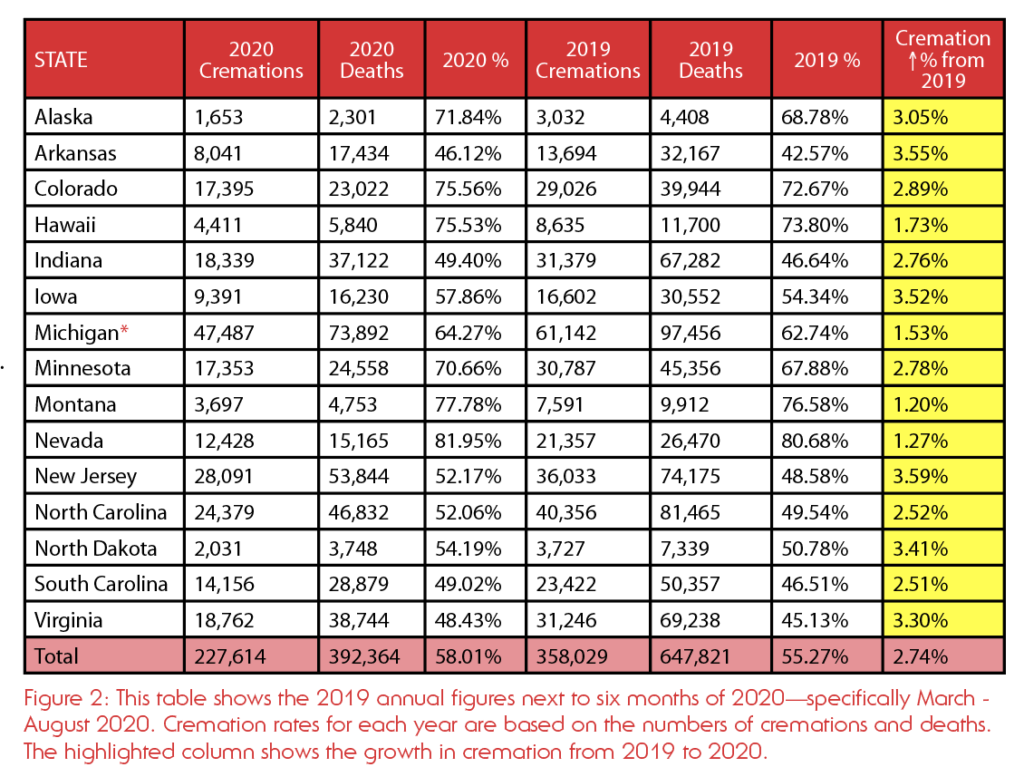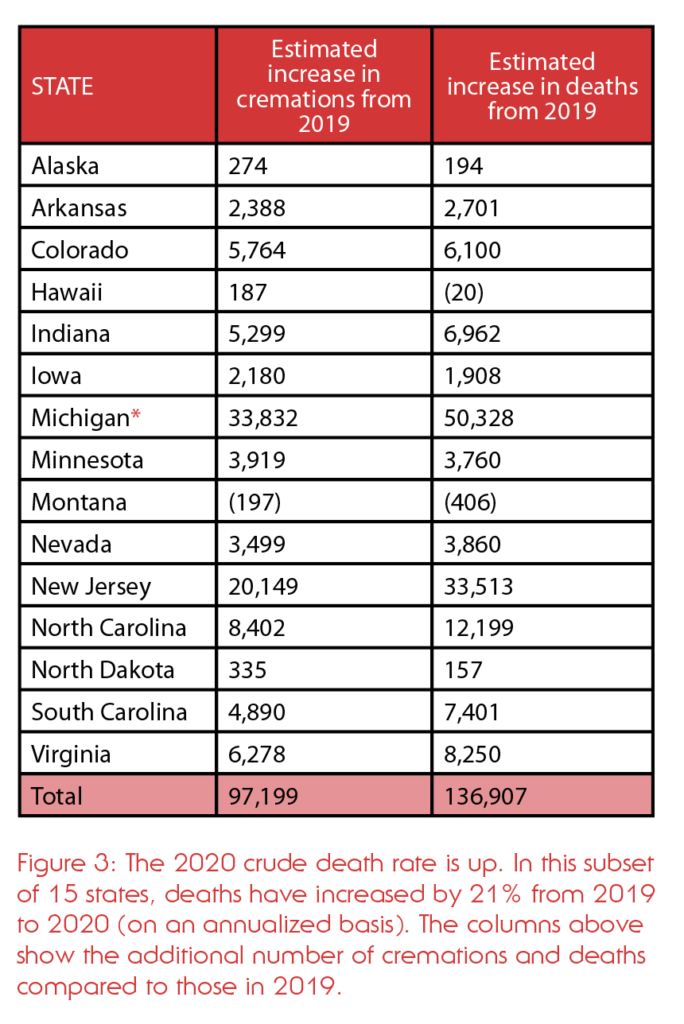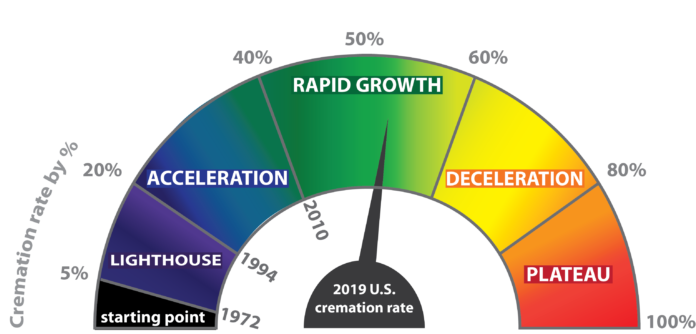By Leader Editor Kara Apel
Many industry professionals have indicated they’ve seen a steady rise in cremation over the years, but thanks to this unprecedented year due to the pandemic, cremation is growing faster than ever before.
As part of its most recent report, the Cremation Association of North America studied data that was collected from 15 states from March to August this year, focusing on the beginning of the pandemic. The data was collected from each state’s vital statistics department.
According to CANA’s report: “The average annual cremation growth rate has been around 1.5% for the last decade, but the rate has jumped in these reporting states to an average of 2.74%. That average rate may be higher in your state or region. This is important as a benchmark for your own business and to plan for the immediate future.”

As you can see in the table above, every state accounted for in the report saw a rise in cremation rates.
CANA also analyzed the increased numbers of deaths and cremations in these states through annualization (taking six months of data, dividing by six, and multiplying by 12 to apply the percentage increase across a year).

CANA has been tracking cremation rates since 1867 — the year of the first mechanized cremation.
“It took nearly 100 years for the national cremation rate to hit 5%; it grew steadily and predictably at about 1-2% annually for the next 45 years, eventually exceeding 50% in 2016,” said the organization in a news release.
CANA has noted increases in states or regions over time but has never seen a nationwide annual growth rate like this before.
Not all states release provisional data. While the data in this report focuses on 15 states, CANA will be including all stats in their upcoming CANA Annual Statistics Report, which is scheduled for publication in May 2021.
CANA notes that the data mentioned above is “provisional, subject to change, and collected from what was available at the time of publication.”
What Can We Expect in 2021?
Glenn Gould, CEO of MKJ Marketing, has reviewed the data provided by CANA and is sharing his primary cremation predictions for 2021.
“When the death rate is up for a period of time, it necessarily will be down for the following period. COVID-19 will apparently continue for at least four or five months, — maybe longer — depending upon the effectiveness of the vaccines and distribution and the public’s acceptance for vaccinations,” Gould said. “By then, it is projected there will be 500,000 deaths attributed to COVID. The annual death rate is 1% of the total population or 3.2 million per year, give or take; so, 500,000 is a lot.”
Gould warns of tough times ahead for many in our industry.
“Firms should prepare for a very competitive period. Keep an eye out for good acquisition opportunities, as some firms will suffer cash flow problems and be looking for an exit,” he said.
Looking ahead at the post-pandemic future, Gould said we could see a continued increase in cremation rates.
“When a death occurs in a family, they refer to what they did in the past when deciding on arrangements, which is why the cremation rate grew at a steady 2% for so many years; families that cremated in the past choose cremation for the next death. If that continues, the cremation rate should increase at higher rates for the next decade as families repeat what they did during the pandemic,” he said.
According to noted death care industry accounting consultant Dave Nixon, “Many firms base their cremation price on the bare costs of conducting a single cremation without including the overhead cost of their business. As cremation continues to grow and traditional services decline, it will be impossible for firms to maintain themselves. It’s important the fees charged for cremation increase to include the real costs of operating the business.”
“Many firms need to right-size their facilities; cremation families do not require as large buildings as traditional families, but many do demand the funeral firm operate their own crematory,” Gould said. “Too many firms assign cremation families to their least effective funeral directions because they feel it’s a lost cause trying to create good cremation arrangements. Staff members require arrangement training, Zoom arrangement training, as well as communication skills for price shopping phone calls.”
Many funeral directors have noticed that consumers are already seeking alternatives to making arrangements by visiting a funeral home in person. Gould predicts virtual arrangements will become fundamental to our industry — and that many families will also seek a more direct solution.
“E-commerce cremation arrangement websites will continue to grow in numbers, as well as the number of families that use them. A client that launched an e-commerce site in March just surpassed 300 calls in about nine months through his e-commerce site. That is astronomical growth. He is building market share that he will keep for years,” Gould said.









I was able to find good advice from your blog posts.